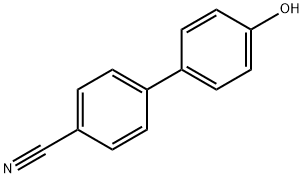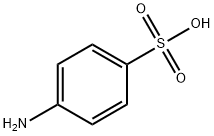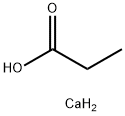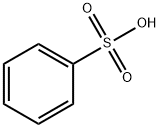Calcium dobesilate
- CAS NO.:20123-80-2
- Empirical Formula: 2C6H5O5S.Ca
- Molecular Weight: 418.41
- MDL number: MFCD00867249
- EINECS: 243-531-5
- SAFETY DATA SHEET (SDS)
- Update Date: 2025-12-16 16:15:04

What is Calcium dobesilate?
Description
Calcium dobesilate is a vasoprotective. It is the calcium salt of dobesilic acid. It is a synthetic molecule with the ability to reduce capillary permeability in the body. In Switzerland the drug is sold by the pharmaceutical company OM Pharma under the trade name of Doxium in capsules containing 500 mg of active ingredient.
Calcium dobesilate is indicated in states of fragility and altered capillary permeability, e.g. diabetic retinopathy, chronic venous disease and hemorrhoidal disease. In combination with lidocaine or with lidocaine and dexamethasone, the drug enters the composition of preparations for the therapy of hemorrhoidal disease. In association with potassium hydrodex-sulfate[citation needed] enters the composition of adjuvant gels in the treatment of varicose veins. The efficacy of calcium dobesilate has been described in patients with microangiopathies such as diabetic retinopathy and diabetic nephropathy.
Chemical properties
White or almost white, hygroscopic powder.
Originator
Doxium,Carrion,France,1971
The Uses of Calcium dobesilate
Calcium dobesilate is an antioxidant that has been used to treat diabetic retinopathy, in which it slows progression of the disease during long-term oral treatment by reducing microvascular permeability, leading to improved visual acuity. It not only acts as an antioxidant but also stimulates endothelial production of nitric oxide.
The Uses of Calcium dobesilate
Dobesilate calcium has been used to study its interference in different in vitro assay systems for the determination of creatinine, uric acid, cholesterol, and triglycerides.
Indications
Calcium dobesilate (CaD) is a widely prescribed veno-tonic drug for CVI, diabetic retinopathy, and the symptoms of hemorrhoid attacks.
Calcium dobesilate is also almost the only one angioprotective drug that recently remains the object of interest in treatment of diabetic retinopathy including clinical studies (Leal et al. 2010, Einarsdottir & Stefansson, 2009, Ribeiro et al., 2006), and even it was used as a standard for determination of the particular activity of a traditional Chinese herbal medicine preparation (Luo et al. 2009).
Manufacturing Process
To an ether solution of 108 grams 1,4-benzoquinone, maintained below 0°C,
one adds an also very cold solution of 102 grams of pure calcium bisulfite as a
50% solution in distilled water. The addition is made carefully so as to
maintain a very low temperature (0° to 4°C) in the vessel, and under stirring
so as to mix the water and ether phase.
At the end of the addition, an almost colorless ether layer swims on the
surface of the strongly colored water layer. After removal of the ether layer,
the water layer is concentrated to dryness under vacuum and a stream of an
inert gas. An earthy precipitate is formed, which after recrystallization yields
100 grams of hydroquinone calcium sulfonate, which decomposes without
melting above 250°C.
The product consists of very small crystals having a powdery aspect and a
pink color which deepens on contact with air. This product is very soluble in
water and alcohol, and insoluble in ether.
Therapeutic Function
Vasodilator
General Description
Dobesilate calcium belongs to the family of fibroblast growth factor (FGF) inhibitors.
Biochem/physiol Actions
Dobesilate Calcium is a vasoprotectant used as a treatment for chronic venous disease, diabetic retinopathy and other microvascular disorders. Its mechanism of action is not fully understood. It appears that dobesilate calcium increases endothelial nitric oxide levels by enhancing the activity of nitric oxide synthase and decreasing capillary hyperpermeability. Also in diabetic retinopathy dobesilate calcium prevents the blood-retinal barrier breakdown induced by diabetes by restoration of the tight junction protein, and decreasing the leukocyte adhesion to retinal vessels.
Side Effects
Fever
Skin reactions
Arthralgia(joint pain)
Gastrointestinal disorders
Agranulocytosis (lower white blood cell count)
Mode of action
Calcium dobesilate is a vaosactive drug used in the management of diabetic retinopathy and venous insufficiency. Calcium dobesilate's mechanism of action is thought to be related to decreasing tissue edema by altering vascular permeability and platelet aggregation. Mentes and colleagues randomized 29 patients with symptomatic hemorrhoids to calcium dobesilate and a high-fiber diet or to a highfiber diet alone. Eighty-six percent of patients treated with calcium dobesilate described cessation of bleeding and improvement in perianal irritation.
Properties of Calcium dobesilate
| Melting point: | >300° (dec) |
| storage temp. | Inert atmosphere,Room Temperature |
| solubility | H2O: soluble15mg/mL, clear |
| form | powder |
| color | white to beige |
| Stability: | Hygroscopic |
| CAS DataBase Reference | 20123-80-2(CAS DataBase Reference) |
Safety information for Calcium dobesilate
| Signal word | Warning |
| Pictogram(s) |
 Exclamation Mark Irritant GHS07 |
| GHS Hazard Statements |
H315:Skin corrosion/irritation H319:Serious eye damage/eye irritation H335:Specific target organ toxicity, single exposure;Respiratory tract irritation |
| Precautionary Statement Codes |
P261:Avoid breathing dust/fume/gas/mist/vapours/spray. P264:Wash hands thoroughly after handling. P264:Wash skin thouroughly after handling. P271:Use only outdoors or in a well-ventilated area. P280:Wear protective gloves/protective clothing/eye protection/face protection. P302+P352:IF ON SKIN: wash with plenty of soap and water. P305+P351+P338:IF IN EYES: Rinse cautiously with water for several minutes. Remove contact lenses, if present and easy to do. Continuerinsing. |
Computed Descriptors for Calcium dobesilate
| InChIKey | QGNBTYAQAPLTMX-UHFFFAOYSA-L |
Calcium dobesilate manufacturer
New Products
4,4-Difluoropiperidine hydrochloride tert-butyl 9-methoxy-3-azaspiro[5.5]undecane-3-carboxylate Indole Methyl Resin N-Isopropylurea N,N-Dicyclohexylcarbodiimide(DCC) MELDRUMS ACID 5-METHYLISOXAZOLE-4-CARBOXYLIC ACID Magnessium Bis glycinate Zinc ascorbate 1-bromo-2-butyne 2-acetamidophenol 9(10H)-anthracenone Erythrosin B, 4-Piperidinopiperidine 2-((4-morpholinophenylamino) (methylthio) methylene) malononitrile 2,4-dihydroxybenzaldehyde 3-(4-morpholinophenylamino)-5-amino-1H-pyrazole-4-carbonitrile Methyl 2-methylquinoline-6-carboxylate 2,6-dichloro-4-nitropyridine 4-Bromo-2-chlorobenzonitrile 2-(benzylamino)acetic acid hydrochloride 4-(tert-Butoxycarbonylamino)but- 2-ynoic acid 3,4-dihydro-2H-benzo[b][1,4]dioxepine 1-Phenyl-1-cycloprppanecarboxylicacidRelated products of tetrahydrofuran








You may like
-
 20123-80-2 Calcium Dobesilate 99%View Details
20123-80-2 Calcium Dobesilate 99%View Details
20123-80-2 -
 Dobesilate Calcium CAS 20123-80-2View Details
Dobesilate Calcium CAS 20123-80-2View Details
20123-80-2 -
 3-(4-amino-1-oxoisoindolin-2-yl)-1-methylpiperidine-2,6-dione 98%View Details
3-(4-amino-1-oxoisoindolin-2-yl)-1-methylpiperidine-2,6-dione 98%View Details -
 614-19-7 98%View Details
614-19-7 98%View Details
614-19-7 -
 20677-73-0 (2,2-diethoxyethyl)methylamine 98%View Details
20677-73-0 (2,2-diethoxyethyl)methylamine 98%View Details
20677-73-0 -
 3-(4-(hydroxyamino)-1-oxoisoindolin-2-yl)piperidine-2,6-dione 98%View Details
3-(4-(hydroxyamino)-1-oxoisoindolin-2-yl)piperidine-2,6-dione 98%View Details -
 57381-49-4 2-bromo-4-chlorobenzonitrile 98%View Details
57381-49-4 2-bromo-4-chlorobenzonitrile 98%View Details
57381-49-4 -
 4,6-dichloropyrimidine-5-carbaldehyde 98%View Details
4,6-dichloropyrimidine-5-carbaldehyde 98%View Details
5305-40-8
